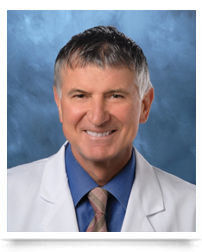Ross Procedure Research Alert: Durability & Reoperations with Dr. Bill Brinkman
Written By: Adam Pick, Patient Advocate, Author & Website Founder
Medical Expert: William Brinkman, MD, Director of the Thoracic Aortic Clinic at Baylor, Scott & White The Heart Hospital – Plano
Published: May 4, 2023
When it comes to the Ross Procedure for the treatment of aortic valve disease, I’m completely biased. The reason? Since my Ross Procedure in 2005, nearly 18 years ago, I have had no issues with my heart. In fact, during my last echocardiogram, my cardiologist said to me, “It’s quite amazing. Your aortic valve still looks perfect.”
That said, my Ross Procedure outcome does not guarantee success for patients considering this advanced form of aortic valve surgery. Patients need to do extensive diligence to learn whether-or-not the Ross Procedure might be right for them.
For example, I get many patient questions about the durability and the reoperation rates of the Ross Procedure. As a result, I do my best to find and share the latest information about the Ross Procedure to help you. So, at the recent Society of Thoracic Surgeons Conference, I was lucky to interview Dr. Bill Brinkman, a Ross Procedure specialist at Baylor Scott & White The Heart Hospital – Plano in Plano, Texas. Dr. Brinkman and his team recently published new research about the Ross Procedure.
Key Learnings About The Ross Procedure
Here are important findings from my discussion with Dr. Brinkman about the Ross Procedure:
- According to Dr. Brinkman, the long-term outcomes for the Ross Procedure are favorable and often restore normal life expectancy for patients. “It’s very exciting,” states Dr. Brinkman, “In summary, patients do very well long term, and their survival parallels the normal survival of the average person without aortic disease in the population.”
- The new aortic valve that is transferred from the pulmonary valve position, also known as the autogaft, has benefits compared to typical heart valve replacement devices including mechanical and tissue valves. “If you look at mechanical valve or bioprosthetic valves, there’s a little bit of price to pay,” states Dr. Brinkman. “I think the gradients across the new aortic valve, are superior. You have a living valve in your aortic root with normal gradients that can heal itself. ”

Dr. William Brinkman (Ross Procedure Surgeon)
- If a patient requires a reoperation after a Ross Procedure, Dr. Brinkman often “spares” the autograft to help patients keep their own tissue. “Occasionally and rarely, we do have reoperations in the Ross procedure,” states Dr. Brinkman. “So, we analyzed that and what we found is that people who have a reoperation on their Ross, many times we can spare the autograft, keep that same living valve working and keep it in there, and they don’t have to be on Coumadin.”
- Patients that do require a Ross Procedure reoperation may continue to benefit from normal life expectancy. “They stay on that same survival curve, which is superior to the bioprosthetic and even the mechanical valve.”
- Given the complexity of the Ross Procedure, Dr. Brinkman’s advice for patients with aortic stenosis, aortic regurgitation and bicuspid aortic valves includes doing research and finding a cardiac center that specializes in the Ross Procedure. “Read up on the Ross Procedure. There’s a lot of information out there,” states Dr. Brinkman. “I would go to a comprehensive valve center where there’s a surgeon or a group of surgeons who are definitely interested in the Ross and have a track record with the Ross because it is a complex procedure. But, if done well, it’s a beautiful thing. It just depends on your anatomy and other factors whether you’re a good candidate for the Ross or not.”
Many Thanks to Dr. Brinkman & Baylor Scott & White The Heart Hospital – Plano
I would like to extend a mighty “THANK YOU!” to Dr. Brinkman for taking the time to share his Ross Procedure research with our patient community. We would also like to thank the entire team Baylor Scott & White The Heart Hospital – Plano for their participation in this research and their care of patients in our community!
Related Links:
Keep on tickin!
Adam
P.S. For the deaf and hard of hearing members of our community, I have provided a written transcript of this video with Dr. Brinkman below.
Adam Pick: Hi, everybody. It’s Adam with heartvalvesurgery.com, and today we’re at the Society of Thoracic Surgeons Conference, and I’m very thrilled to be joined by Dr. Bill Brinkman, who’s a leading aortic specialist at Baylor Scott & White, The Heart Hospital, in Plano, Texas. Dr. Brinkman, thanks for being here today.
Dr. Brinkman: Thank you for having me.
Adam Pick: We’re going to be talking today about one of your specialties, which is the Ross Procedure, and you know it’s very dear to my heart because 17 years ago, I had a Ross procedure performed. I understand that you’re just completing some really new research with 200 or so patients about your series and how the Ross procedure has performed. Can you share with our community what you have found in this research?
Dr. Brinkman: Yeah, it’s very exciting the long-term follow-up on our Ross series. Basically, in summary, these people do very well long term, and their survival parallels the normal survival of the average person without aortic disease in the population. It’s the only valve operation that actually does that. If you look at mechanical valve or bioprosthetic valves, there’s a little bit of price to pay. I think the gradients across the aortic valve, the new aortic valve, are superior. You have a living valve in your aortic root with normal gradients that can heal itself. It’s superior as far as the long-term outcomes.
Occasionally and rarely, we do have reoperations in the Ross procedure, so we analyzed that also, and what we found is that people who have a reoperation on their Ross, many times we can spare the autograft, keep that same living valve working and keep it in there, and they don’t have to be on Coumadin. They stay on that same survival curve, which is superior to the bioprosthetic and even the mechanical valve.
Adam Pick: There’s going to be a lot of patients watching this with aortic valve disease who might be considering the Ross procedure. What’s your advice for them?
Dr. Brinkman: I’d say read up on it. There’s a lot of information out there on your site and places like that, and I would go to a comprehensive valve center where there’s a surgeon or a group of surgeons who are definitely interested in the Ross and have a track record with the Ross because it is a complex procedure, but if done well, it’s a beautiful thing. It just depends on your anatomy and other factors whether you’re a good candidate for the Ross or not.
Adam Pick: Dr. Brinkman, on behalf of all the patients at heartvalvesurgery.com, patients all over the world, I can’t thank you and your team enough for all the wonderful things you’re doing at Baylor Scott & White, The Heart Hospital, Plano. Thanks for being here today.
Dr. Brinkman: Thank you.



